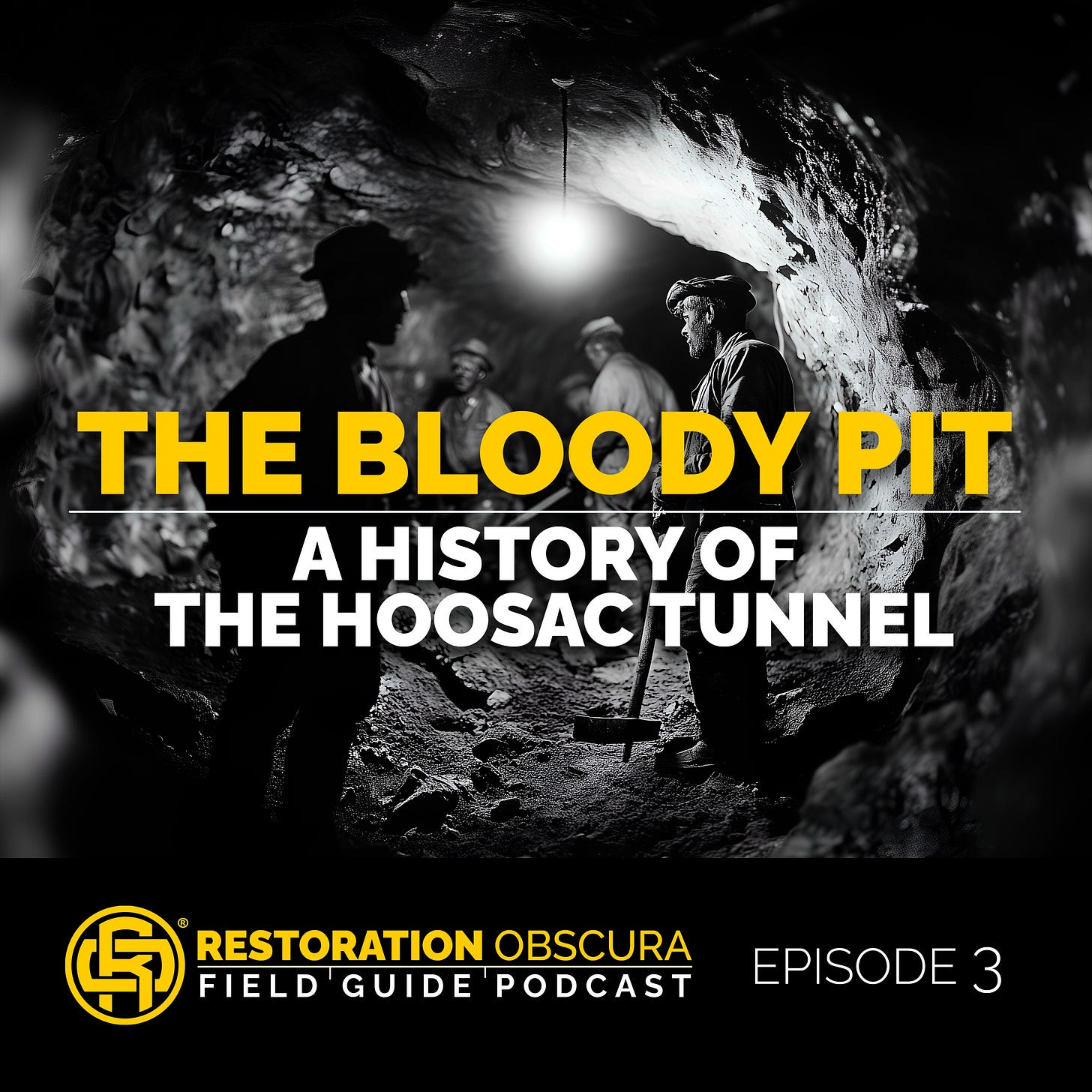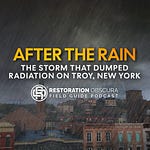Restoration Obscura Field Guide Episode 3: The Bloody Pit
📍Hoosac Tunnel, Western Massachusetts
Beneath the Berkshires, a nearly five-mile tunnel cuts through Hoosac Mountain — a staggering feat of 19th-century engineering known formally as the Hoosac Tunnel. But to those familiar with its violent past, it’s simply called The Bloody Pit.
This episode tells the full story: from the tunnel’s origins in the mid-1800s as a bold plan to link Boston with upstate New York, to the nearly 25 years of brutal labor it took to complete. Hundreds of workers, many of them Irish immigrants and Civil War veterans, toiled in near-total darkness with hand tools and black powder. Later, nitroglycerin entered the mix—powerful, but dangerously unstable. Explosions, cave-ins, and toxic smoke claimed lives by the dozen. Official records say nearly 200 men died. The real number may be higher.
We explore one of the worst disasters in American tunnel history: the 1867 fire and collapse of the Central Shaft, which trapped thirteen men underground. Their bodies weren’t recovered for nearly a year. The event and the ghost stories that followed, helped cement the tunnel’s sinister nickname.
As construction dragged on, stories spread of disembodied voices, cold winds in still air, glowing lights on the tracks. Some claimed to see phantom workers in the darkness. Others spoke of justice, either divine or human, taking its toll.
Today, the tunnel remains active. Freight trains still rumble through daily. There are no lights, no walkways, no room for mistakes. And while its engineering legacy is significant, so too is its emotional weight. The Hoosac Tunnel stands as both a marvel of progress and a monument to the human cost of that progress.
This episode also draws connections to other forgotten industrial sites, like the erased mining town of Tahawus in New York’s Adirondacks. Places where ambition met wilderness, where lives were spent and then slowly erased. Places where memory lingers, even when the buildings are gone.
We close with a reminder: while these stories captivate the imagination, the sites themselves remain hazardous. Trespassing into active or abandoned infrastructure is dangerous and often illegal. Curiosity is essential—but so is respect. The past doesn’t require breaking the law to be felt.
The Bloody Pit isn’t just a tunnel. It’s a wound carved into stone. And this episode is a reminder that some places remember—even when we forget.
Read the companion article: https://restorationobscura.substack.com/p/the-hoosac-tunnel
About Restoration Obscura
Restoration Obscura is where overlooked history gets another shot at being seen, heard, and understood.
Through long-form storytelling, archival research, and photographic restoration, we recover the forgotten chapters—the ones buried in basements, fading in family albums, or sealed behind locked doors.
The name nods to the camera obscura, an early photographic device that captured light in a darkened chamber. Restoration Obscura flips that idea, pulling stories out of darkness and casting light on what history left behind.
This project uncovers what textbooks miss: Cold War secrets, vanished neighborhoods, wartime experiments, strange ruins, lost towns, and the people tied to them. Each episode, article, or image rebuilds a fractured past and brings it back into focus, one story at a time.
If you believe memory is worth preserving, if you’ve ever felt something standing at the edge of a ruin or holding an old photograph, this space is for you.
Subscribe to support independent, reader-funded storytelling: www.restorationobscura.com
The Restoration Obscura Field Guide Podcast is streaming now on Spotify, Apple Podcasts, Amazon Music, Audible, and YouTube Music.
Every photo has a story.
© 2025 John Bulmer Media & Restoration Obscura. All rights reserved. Educational use only.












Share this post